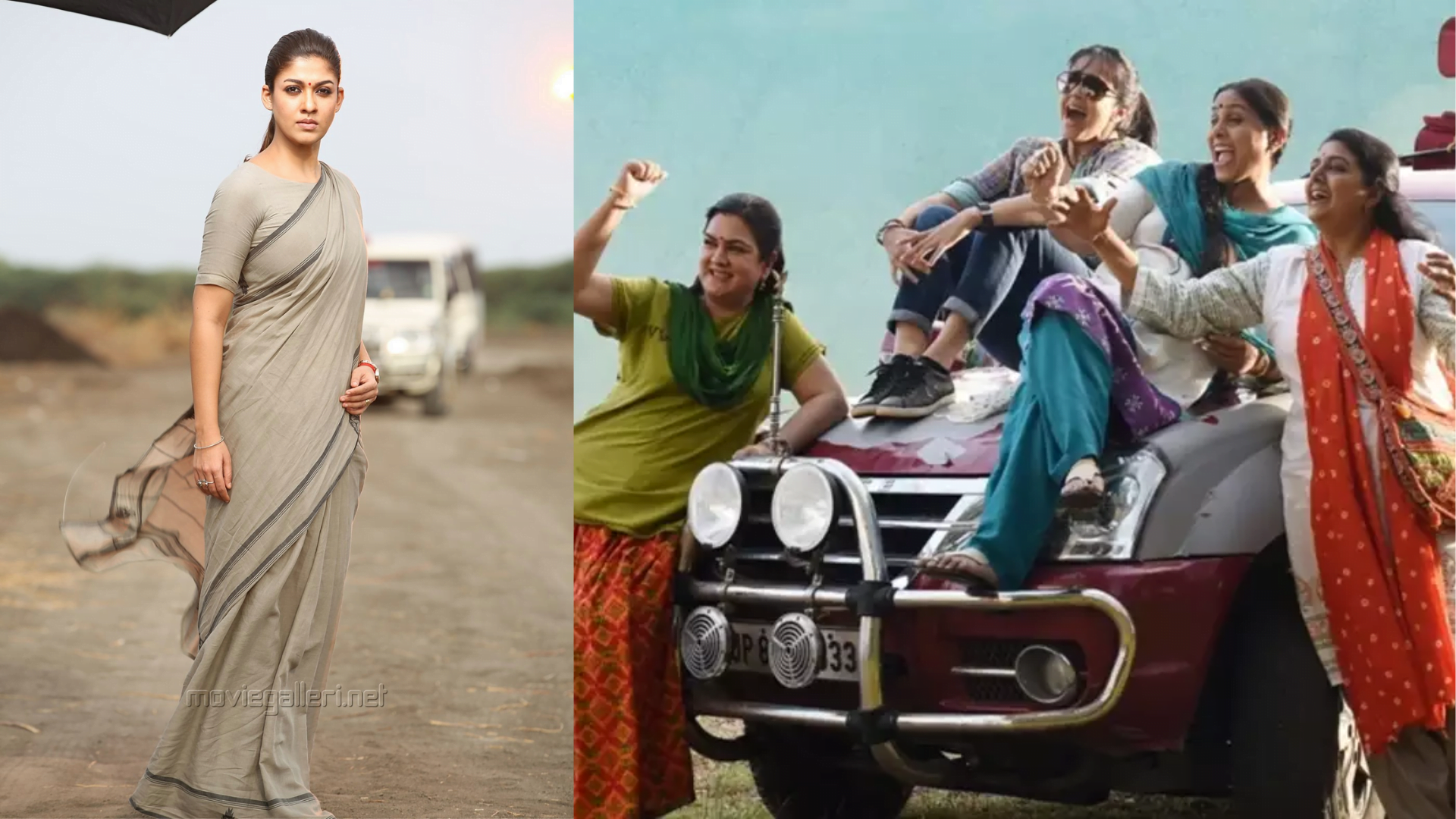Editor’s Note: FII’s #MoodOfTheMonth for May 2022 is Gender at Workplaces. We invite submissions on the many layers of this theme throughout the month. If you’d like to contribute, kindly refer to our submission guidelines and email your articles to sukanya@feminisminindia.com
Trigger warning: Gender violence, caste-discrimination
Tamil Nadu, as a state, is progressive and driven by social welfare schemes enabling women’s empowerment and career growth. Tamil Nadu’s gender-wise employable ratio includes 67% women and 50% men. With government initiatives such as free bus fees, a Two-wheeler scheme for working women, and promising self-help group aid, women are empowered socially and financially. The on-ground reality of women reflects their trait of the enterprising and determined soul with their wings all set to reach great heights and the government’s consistent efforts to support their dream.
Given the premise of Tamil Nadu’s sustainable and holistic approach toward working women professionals, the world of working women on the screen constantly contradicts. The depiction of working women observed in Tamil films across decades and yesteryear films has always been different from reality, and it hasn’t outgrown the regressive stereotypes.
Also read: Dear Tamil Cinema, Let Brown Women Play The Role Of Brown Women

Tamil Nadu, as a state, is progressive and driven by social welfare schemes enabling women’s empowerment and career growth. Tamil Nadu’s gender-wise employable ratio includes 67% women and 50% men. With government initiatives such as free bus fees, a Two-wheeler scheme for working women, and promising self-help group aid, women are empowered socially and financially.
Though it’s a laudable fact that Indian films represent more working women characters when compared to other global language films, the true nature of portrayal and how close the reel characters resonate with real-life working women needs to be addressed and modified.
According to an MIT Manipal article, Indian cinema, in general, lacks balance and underrepresents women. They cast working women in roles that are synonymous with nurturing and submissive. These roles and characters reinforce gender stereotypes and seed a theme that’s far from reality. Regarding the male gaze and female representation, the blog post quotes the work of English art critic and novelist John Berger that reads, “Men act, women appear.” That stands true irrespective of the genres and language of the film.
There is a distinguished and evident difference in the way women characters are described when compared to men, which is an outcome of gender bias rooted in film directors and reflected in gender-based disparity in the screentime. With films that speak about women’s empowerment and all the women-centric movies, they reek of the saviour complex where a ‘Man’ is looked up to for rescue. Women are repeatedly portrayed as “others” who are not capable of surviving and facing the world without depending on men. More often than not, the mainstream films speak about how women’s decision-making is flawed and ends up in mansplaining. For instance, the film Padayappa , portrays Neelambari( a well-educated woman with modern thoughts who gets schooled and ridiculed by the protagonist on the do’s and don’t’s of women).
Given the premise of Tamil Nadu’s sustainable and holistic approach toward working women professionals, the world of working women on the screen constantly contradicts. The depiction of working women observed in Tamil films across decades and yesteryear films has always been different from reality, and it hasn’t outgrown the regressive stereotypes.
The overall tonality of a woman character in Tamil cinema does not move beyond loose ponnu template (a meek girl who is made to believe she is cute), or mother (same old glorification of sacrifice) or supporting actor with no scope (sister, lover and friend). Women empowerment/centric movies have their own set of conditioning that they apply to the independent woman (wears a modern outfit, is indisciplined, selfish, and every other feature to make viewers hate her).
Also read: Tamil Cinema And Its Misogyny Endorsing The Vain Macho-Hero Image
Even after decades of evolution and multiple changemakers/ trendsetters, no efforts have been made to alter the existing female characterisation in Tamil cinema. These age-old patterns of gender stereotypes and problematic portrayal of women can be used to analyse the working women’s representation in Tamil Cinema.
One of the primary observations about mainstream Tamil cinema starring mass heroes is that the woman (so-called lead) gets to be a voiceless character used only as a charming icon. Women leads barely have any dialogues and have a minuscule impact on the story. In the majority of the films, the profession/occupation of the women is always anonymous. Apart from being the shadow, love interest of the hero, and mere screen presence, their roles carry no weight and purpose. In Sivakarthikeyan’s Velaikaran, Nayanthara is shown to be a public icon voicing out in favour of women empowerment in a television talk show, but once the hero rescues her from the trolls/attacks she faces because of her opinion, the movie entirely shifts away from her onto how she supports (read, exists silently while sharing screen and gets life only for duet) and stands for him and his vision.
In the movie Mr. Local, Nayanthara is a successful business professional yet gets mansplained and humiliated by the hero (because he is the hero, his qualifications and job becomes insignificant). This is the regular pattern in Kollywood of the working women narrative, which is either about the man’s career or the man sabotaging women for having a career and being a powerful people.
Working women characters are written through a sexist lens. For instance, in some films, the female character is made to feel bad/guilty for choosing a career over a family. That as a woman, family and caretaking is her primary role as a woman is constantly reinstated in Tamil cinema. To mention 36 Vayathinile, Jyothika’s success as a woman gets accomplished only after her husband’s validation. Her initiative of terrace gardening and choice to follow her dreams gets invisible at the end of the movie and how she is accepted by her husband for her question to PM becomes the winner.
Even after decades of evolution and multiple changemakers/ trendsetters, no efforts have been made to alter the existing female characterisation in Tamil cinema. These age-old patterns of gender stereotypes and problematic portrayal of women can be used to analyse the working women’s representation in Tamil Cinema.
Any woman not complying with the society’s conditioning of women gets judged and slut shamed for exercising the right to choose for her life. Film characters are no different and cannot escape the misogyny of writers who want to feed the patriarchal minds of viewers. In the movie Taramani, Andrea plays the role of an IT employee. The casual assumption that women from IT smokes and are party animal has been a norm on screen. Films about gender crimes mostly use working women as victims of the crime, which indirectly instills fear among women from marginalized and remote backgrounds, giving them an intimidating picture of the real world.
To quote Pink and Nerkonda Parvati, all the three victims are working professionals staying alone in a city. Though the film emphasizes the message ‘No means No,’ films, when remade from other languages, should do justice to the representation and adapt to the region-based crisis. The film’s portrayal of upper caste/class women is on the surge, and women from socially backward communities get left out as the issues they face are entirely different, which haven’t found a space in pop culture yet.
Another problematic pattern followed in films with working women is the normalizing struggles of women in regard to work-life balance. The movies re-establish that women don’t and shouldn’t have it easy like men and glorify the hardships of the multiple hats that women are forced to wear. They believe that “Yes, every working mother is struggling to feed her family. You are not a special one to be exempted from pain.” Movies should break the narrative that women and pain are inseparable and portray progressive thoughts.
Any woman not complying with the society’s conditioning of women gets judged and slut shamed for exercising the right to choose for her life. Film characters are no different and cannot escape the misogyny of writers who want to feed the patriarchal minds of viewers.
Tamil films with convincing working women characterisation end up in disappointment. Nayanthara playing the role of a collector in Aram was a stellar performance and solid writing dealing with how women make decisions and handle a crisis. Unfortunately, the film ends with her resigning from her job for her inability to deal with injustice and power structure.
In most of these portrayals and discussions, the focus, even when meagre, caters only to cis-women and tends to be trans exclusionary.
One breath of relief amidst the problematic women characterisation was when Magalir Mattum featuring Urvasi , Revathi and Rohini was released. It was one of the most realistic portrayals of working women from different backgrounds and how they stand up against the harassment/discrimination they face at the workplace.
Researcher Peter (2018) suggests that even if the woman is portrayed to be working in an IT company or some media-related work such as journalists, she is always shown to be in a mid-level position and not in the power of authority. Women do not get featured as STEM professionals, and even on the rarest occasion, the depiction is about a man/villain. For instance, Immaika Nodikal has Nayanthara as a cop, but the crux of the film deals with her smart and witty way of taking revenge on people who killed her husband. It is difficult to find a working woman character sketch written independently from her family role. The new Magalir Mattum with Jyothika in the lead revolves around families and struggles.
The takeaway lesson from all the working women characters seen on screen in Tamil films is that the industry needs to do a lot of in-depth research to get an insight into the world of working women. Working women are written to satisfy patriarchy and meet the checklist of culturally driven women, and this has to be erased. On the whole, working women characters should come to life if written either by women or from a women’s point of view and not from how a man perceives working women.
Lavanya is a communication media professional and passionate writer/storyteller. She is in the journey of learning, unlearning and relearning every aspect of equality, and a proud, strong advocate of social justice in everyday life who is interested in dialogues and discussions around society and empowerment for all.
Featured Image Source: Times Of India, Moviegalleri.net






I don’t agree with most of the things written here. For example, it’s right to show a glimpse of the working women’s family in movies. Only then the audience can get a better understanding of who she and where she is coming from. I actually felt that they could have shown something of nayantara’s personal life in aram.
And the guilt of prioritising career over family is a real thing. It’s not something construed from a male perspective of how working women should be. I myself feel guilty very often that I’m not spending enough time with my child.
Irrespective of gender, everyone needs validation from their families/friends. So, I didn’t find anything odd when jyothika finally feels happy about the validation from her husband.
It’s true sometimes they are portrayed in that way but it is in the case of film industry not only tamil cinema right?